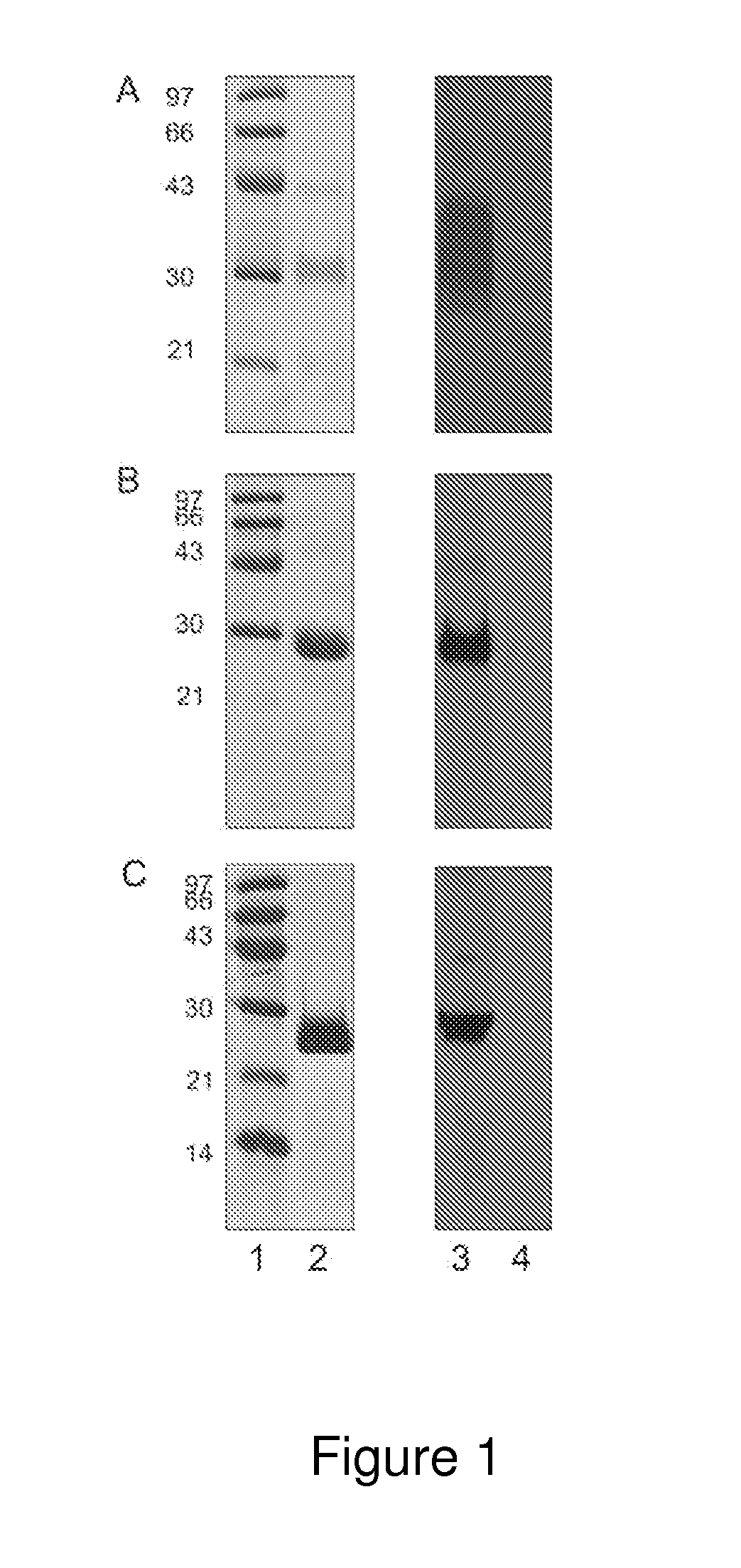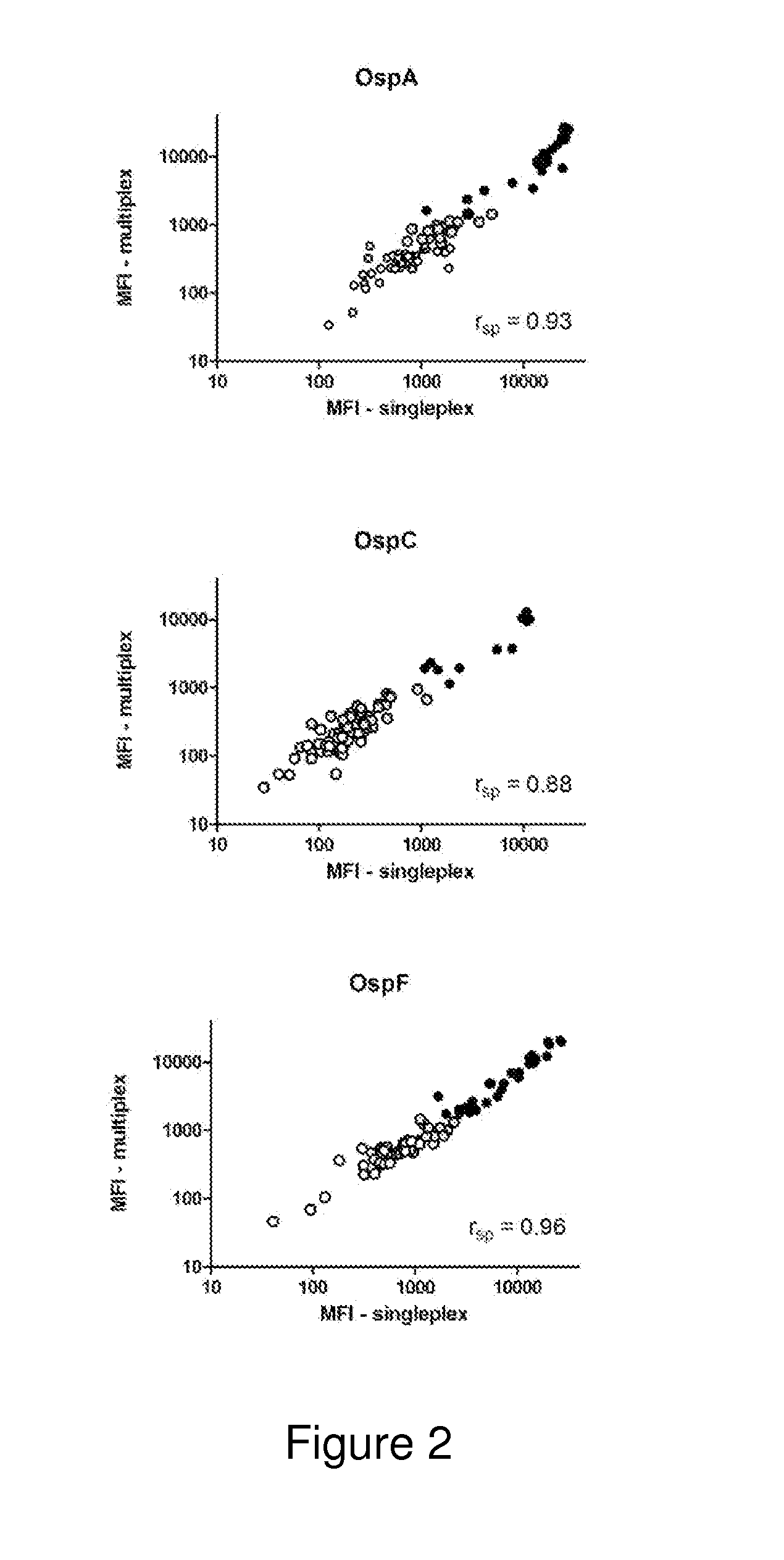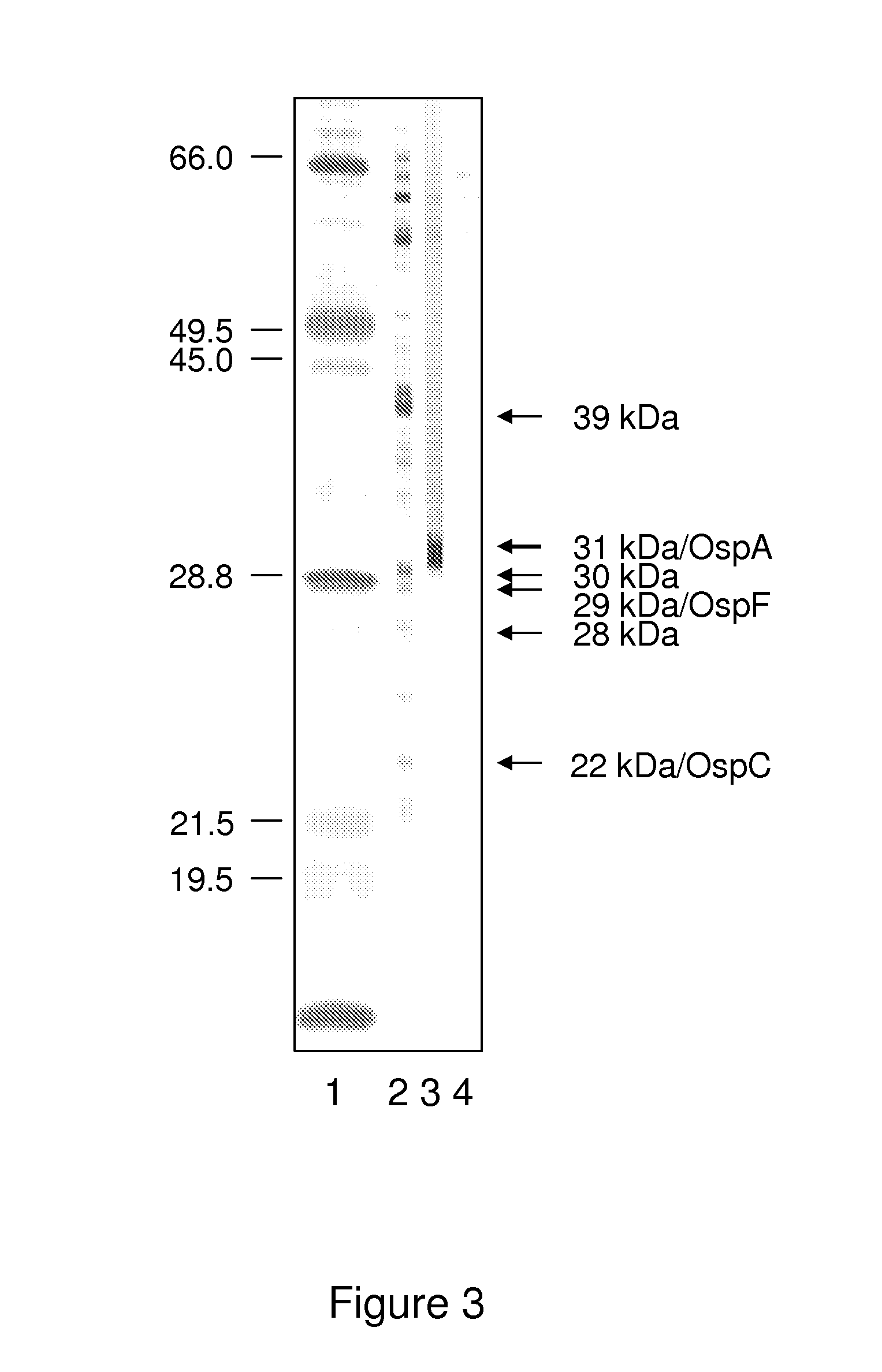Methods for Diagnosing Lyme Disease
- Summary
- Abstract
- Description
- Claims
- Application Information
AI Technical Summary
Benefits of technology
Problems solved by technology
Method used
Image
Examples
example 1
[0060]This Example provides a description of one embodiment of the method demonstrating its enhanced utility for determining Lyme disease status in canines. In particular, in this Example, we describe the development and validation of a fluorescent bead-based multiplex assay for simultaneous detection of antibodies specific for B. burgdorferi OspA, OspC and OspF antigens in canine serum. The validation was performed by comparing multiplex assay results to the recommended confirmatory test for diagnosing Lyme disease which is Western blotting (WB) (see, for example, www.cdc.gov / ncidod / dvbid / lyme / ld_humandisease_diagnosis.htm). Among other advantages of the present invention, and contrary to previous studies in canines which taught that OspC was not a suitable diagnostic marker, the current invention clearly demonstrates otherwise. In particular, test results presented in this Example provide for enhanced determination of Lyme disease status in canines as compared to any currently ava...
example 2
[0076]This Example provides a description of one embodiment of the method demonstrating its enhanced utility for determining Lyme disease status in equines. The multiplex assay for horses uses OspA, OspC and OspF, as markers for vaccination and / or early or chronic infection as previously described for the canine Lyme assay in Example 1. In general, multiplex assays use the principle of simultaneous detection of soluble analytes in biological samples (Morgan et al. 2004, Prabhakar et al. 2005). They are based on fluorescent beads coupled with individual antigens which provide the matrix of the assay. Multiplex assays typically detect antibodies in the pg / ml range, while ELISA detect ng / ml and WB μg / ml concentrations (Kellar and Douglas 2003, Morgan et al. 2004, Wagner and Freer 2009). Thus, the new Lyme multiplex assay for horses is based on specific marker proteins for infection with or vaccination against B. burgdorferi and also likely has an advantage in situations when concentrat...
PUM
| Property | Measurement | Unit |
|---|---|---|
| Fluorescence | aaaaa | aaaaa |
Abstract
Description
Claims
Application Information
 Login to View More
Login to View More - R&D
- Intellectual Property
- Life Sciences
- Materials
- Tech Scout
- Unparalleled Data Quality
- Higher Quality Content
- 60% Fewer Hallucinations
Browse by: Latest US Patents, China's latest patents, Technical Efficacy Thesaurus, Application Domain, Technology Topic, Popular Technical Reports.
© 2025 PatSnap. All rights reserved.Legal|Privacy policy|Modern Slavery Act Transparency Statement|Sitemap|About US| Contact US: help@patsnap.com



